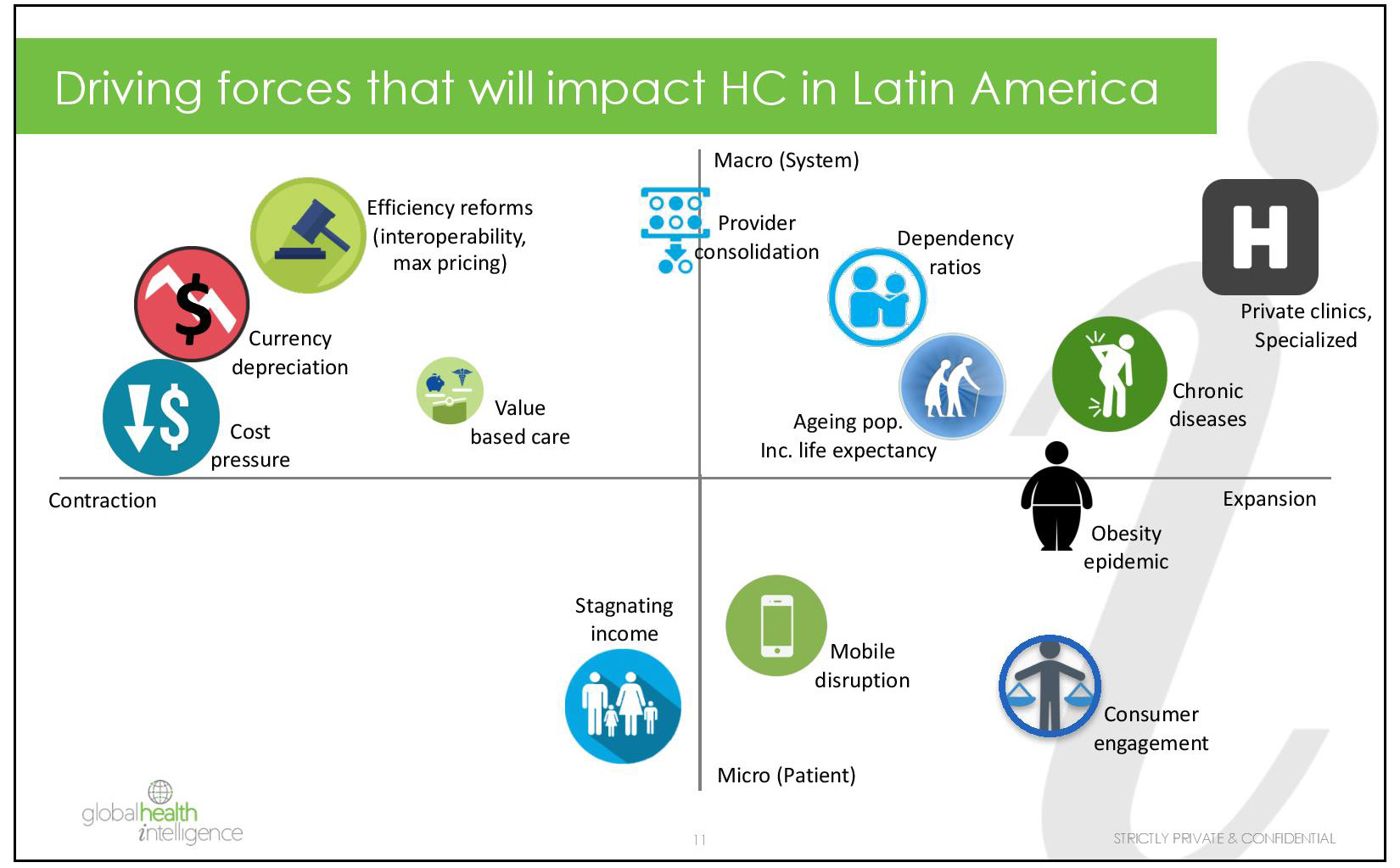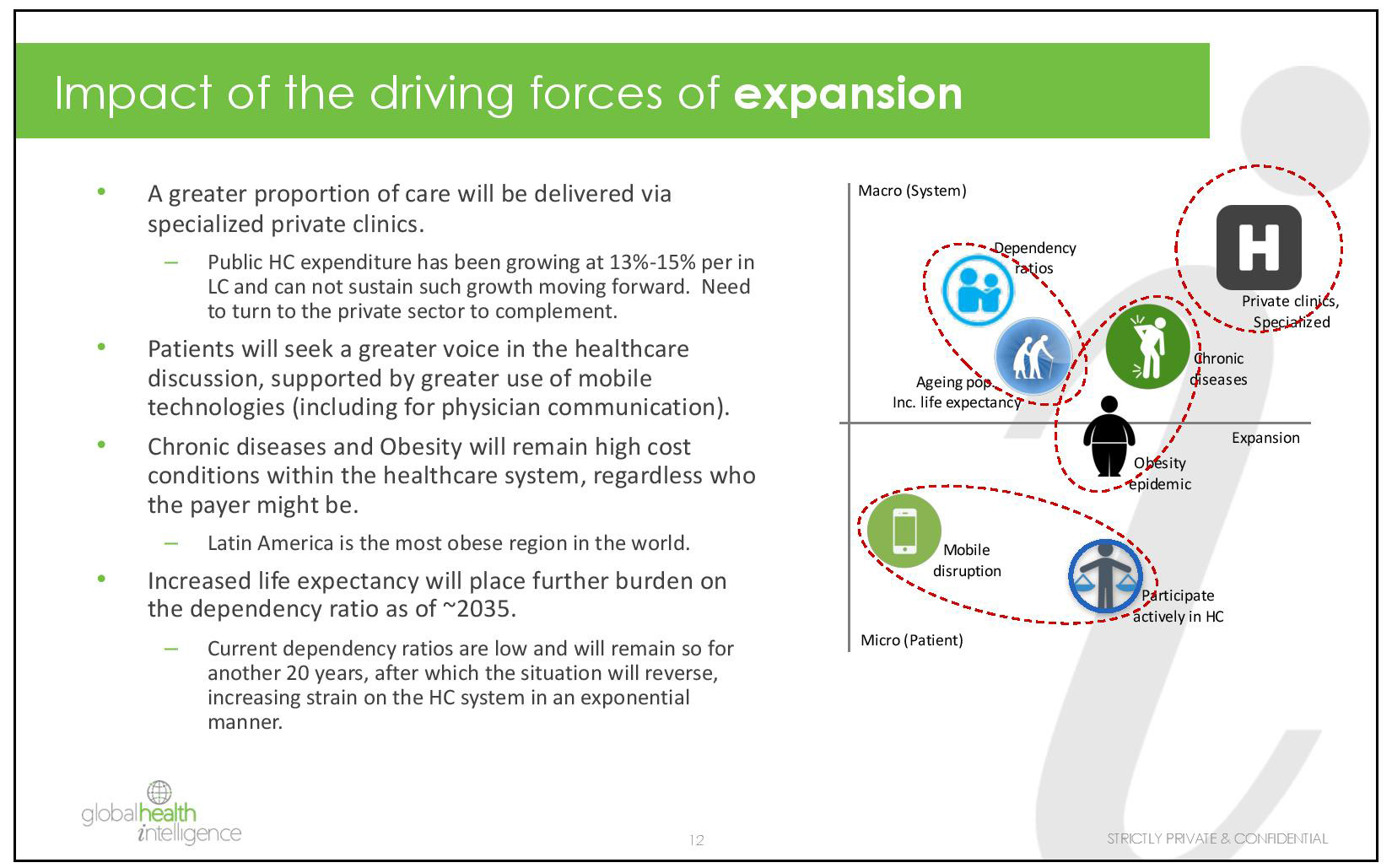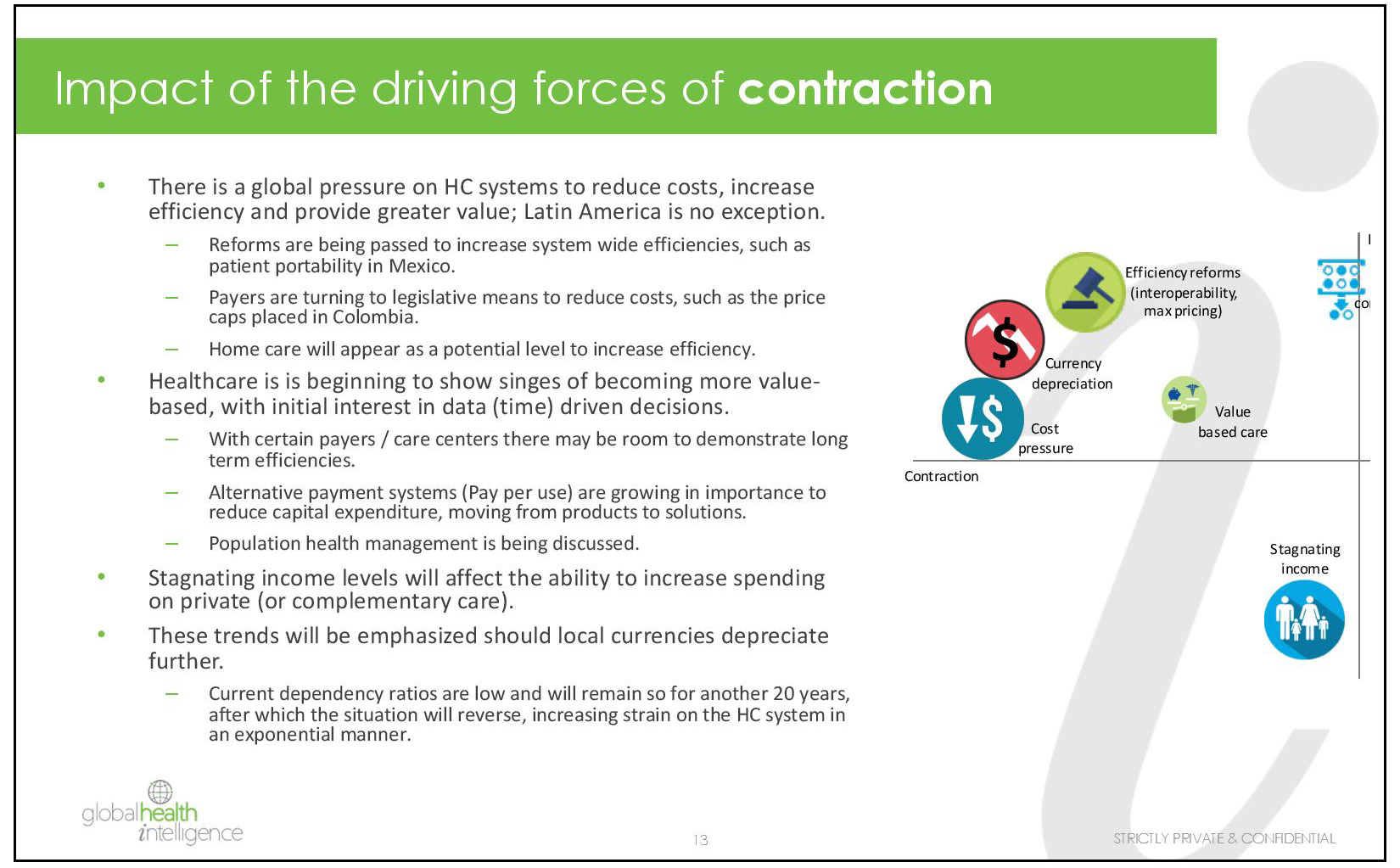


GHI delivered the keynote presentation at the Eye for Pharma Medical Device event in Mexico City on October 3rd, 2016. During this address, GHI presented an analysis of the driving forces affecting Latin America’s healthcare sector.
Latin America’s healthcare sector is being affected by forces of expansion and contraction. According to GHI analysis, the sector will continue to grow at a solid pace in the coming years. Adapting products and services to capitalize on the growth factors and limit exposure to the contraction forces will help companies grow their presence in the region.
Growth drivers include:
- A greater proportion of care will be delivered via specialized private clinics.
- Public HC expenditure has been growing at 13%-15% per in LC and can not sustain such growth moving forward. Need to turn to the private sector to complement.
- Patients will seek a greater voice in the healthcare discussion, supported by greater use of mobile technologies (including for physician communication).
- Chronic diseases and Obesity will remain high cost conditions within the healthcare system, regardless who the payer might be.
- Latin America is the most obese region in the world.
- Increased life expectancy will place further burden on the dependency ratio as of ~2035.
- Current dependency ratios are low and will remain so for another 20 years, after which the situation will reverse, increasing strain on the HC system in an exponential manner.
Contraction drivers include:
- There is a global pressure on HC systems to reduce costs, increase efficiency and provide greater value; Latin America is no exception.
- Reforms are being passed to increase system wide efficiencies, such as patient portability in Mexico.
- Payers are turning to legislative means to reduce costs, such as the price caps placed in Colombia.
- Home care will appear as a potential level to increase efficiency.
- Healthcare is beginning to show signs of becoming more value-based, with initial interest in data (time) driven decisions.
- With certain payers / care centers there may be room to demonstrate long term efficiencies.
- Alternative payment systems (Pay per use) are growing in importance to reduce capital expenditure, moving from products to solutions.
- Population health management is being discussed.
- Stagnating income levels will affect the ability to increase spending on private (or complementary care).
- These trends will be emphasized should local currencies depreciate further.
- Current dependency ratios are low and will remain so for another 20 years, after which the situation will reverse, increasing strain on the HC system in an exponential manner.


